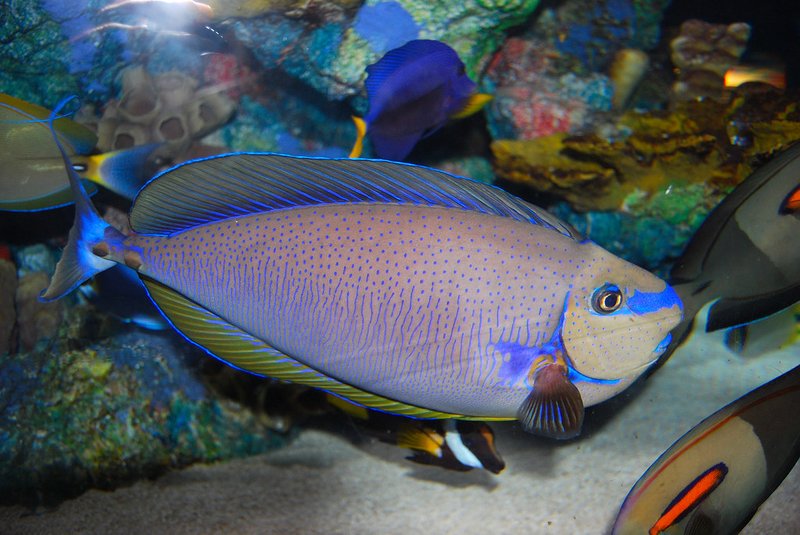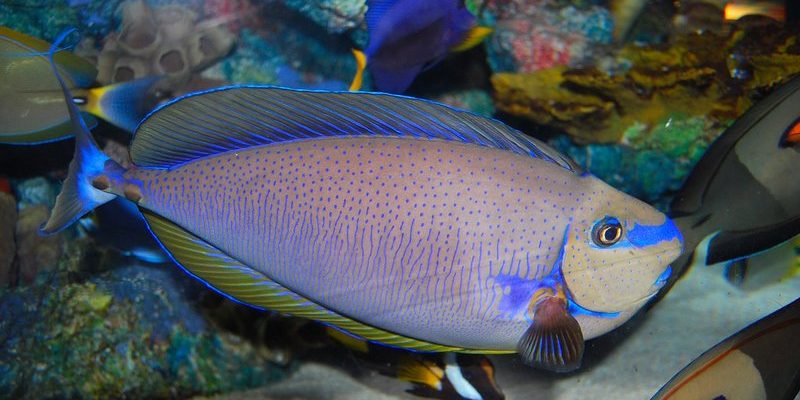
The Vlamingii Tang, also known as the Zebrasoma vlamingii, is native to the reefs of the Indo-Pacific. Its stunning blue body and yellow tail make it a showstopper in aquariums and natural habitats alike. But what’s more intriguing than its looks are the stories and beliefs that cultures around the world have woven around it. Let’s dive into some of those myths and cultural beliefs to explore what they tell us about the Vlamingii Tang and the human experience.
The Origins of Vlamingii Tang Myths
It’s fascinating how different cultures approach the same creature. The Vlamingii Tang has inspired a variety of myths, especially among coastal communities where it resides. In some regions, local fishermen believe that seeing the Vlamingii Tang means a bountiful catch is on the way. This connection to good fortune ties the fish to local fishing traditions, where it’s seen as a good omen for those trying their luck at sea.
In contrast, some cultures view the Vlamingii Tang as a symbol of protection. They believe that having an image or even a statue of this fish in their homes or boats can keep bad spirits away. The vibrant colors of the tang are thought to repel negativity, making it a popular choice in local art and crafts. It’s intriguing to think about how a single fish can embody such different meanings across cultures.
Cultural Symbols and Interpretations
The Vlamingii Tang has also made its way into various cultural representations. For example, in some Polynesian cultures, fish are often seen as messengers from the gods. The Vlamingii Tang, with its vibrant colors and lively movements, fits this role perfectly. It’s represented in traditional carvings and tattoos, symbolizing freedom and connection to the ocean.
Additionally, in some Asian cultures, the Vlamingii Tang is linked to harmony and balance. The fish’s graceful swimming and social behavior are seen as reminders of the importance of cooperation and peaceful living within communities. It’s interesting how these interpretations can teach us about the ideals that various cultures uphold.
Misconceptions About the Vlamingii Tang’s Behavior
You might have heard some wild claims about the Vlamingii Tang’s behavior, like how they act in the wild. One common myth is that these fish are aggressive and territorial. While they can be protective of their space, they are generally known for being friendly and social among their species. You’d often see them swimming in groups, sharing their reef environment harmoniously.
Another misconception is that they need constant interaction with humans to thrive in captivity. While it’s true that they enjoy the company of their tank mates, they’re quite independent creatures. In fact, over-crowding a tank with too many fish can lead to stress, making it essential to provide them with enough space to swim freely. Understanding their true nature can help aquarists create a healthier environment for these lovely fish.
Environmental Influence on Myths
The surrounding environment plays a crucial role in shaping the myths and beliefs about the Vlamingii Tang. For instance, in areas where the ocean is heavily polluted, some people believe that Vlamingii Tangs have become rarer due to bad luck. However, the reality is more about the impact of environmental conditions, like coral reef health and ocean temperature, rather than any mystical reason.
As climate change affects marine life, stories may evolve to explain their decline, often linked with folklore or cultural fears. It’s a reminder of how interconnected our experiences are with nature and how our beliefs can reflect societal concerns about our environment.
The Role of the Vlamingii Tang in Aquariums
In the world of aquariums, the Vlamingii Tang is often regarded as a prized fish due to its beauty. Many hobbyists believe that having one in their tank can bring an aura of relaxation and peace, similar to the calming effects of watching a serene landscape. This belief ties back to the idea of fish as symbols of tranquility and balance.
However, it’s essential for aquarium enthusiasts to understand the specific care requirements of the Vlamingii Tang. These fish thrive in well-maintained tanks with plenty of swimming space and stable water conditions. Often, myths surface about their feeding habits as well. Some people think they can thrive solely on algae, but they actually benefit from a varied diet that includes high-quality flakes, pellets, and occasional meaty foods.
Comparisons with Other Tang Species
When looking at the Vlamingii Tang, it’s helpful to compare it to other popular tang species. For instance, the Blue Tang or Yellow Tang often steal the spotlight due to their vibrant colors and iconic appearances. Some myths about these other species suggest they are easier to care for than the Vlamingii, but that’s not wholly accurate.
The Vlamingii Tang has its unique beauty and charm that can rival its cousins. It’s important for aquarists to choose a fish that fits their tank conditions and personal preferences rather than relying solely on myths. Each tang species has its unique needs, and understanding these can lead to healthier and happier fish.
Modern Cultural Impact of the Vlamingii Tang
In contemporary culture, the Vlamingii Tang continues to inspire art and design. From playful illustrations in children’s books to stunning prints in modern homes, this fish’s charm can be seen everywhere. Surprisingly, it’s also become a symbol in social media campaigns promoting ocean conservation. This unassuming fish can serve as a reminder of how we need to protect our marine environments.
Additionally, with the rising interest in sustainability, many aquarium shops now emphasize ethical practices when sourcing Vlamingii Tangs. This shift reflects a growing cultural awareness of the impact of our choices on the ocean and its inhabitants. Supporting sustainable practices not only helps preserve the Vlamingii Tang’s population but also promotes a healthier ecosystem overall.
Connecting Myths to Real-World Action
While some of the myths surrounding the Vlamingii Tang are light-hearted or fanciful, they can inspire real-world actions. For instance, the belief that the fish brings good luck can translate into community initiatives focused on marine preservation. When people feel connected to a creature through story and myth, they may be more likely to advocate for its protection.
Cultural beliefs can also act as a bridge to educating others about the importance of respecting marine life. Sharing these stories can help raise awareness about the ecological challenges the Vlamingii Tang faces, encouraging people to take action in their own lives for a healthier ocean.
In exploring the myths and cultural beliefs surrounding the Vlamingii Tang, we uncover not just fascinating stories but also insights into how we relate to our natural world. This beautiful fish is more than just a pretty face; it embodies the hopes, dreams, and concerns of many cultures. While some myths might be whimsical, they reflect our deep connection to the ocean and its wonders.
Whether you’re a seasoned aquarist or just curious about marine life, understanding the Vlamingii Tang—myths and all—can enrich your appreciation for this species. So, the next time you spot a Vlamingii Tang, remember that beneath its stunning exterior lies a wealth of stories waiting to be shared. Let’s celebrate these stories while also respecting and protecting the Vlamingii Tang and its home in the vibrant reefs of our oceans.

